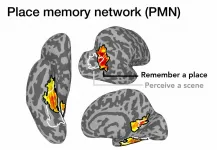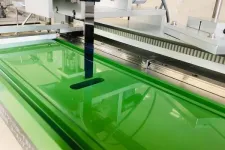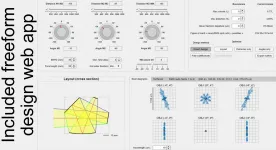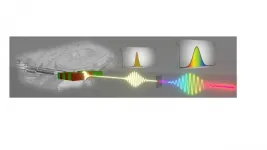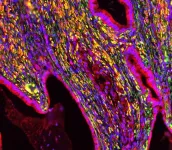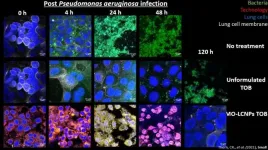Ankle and foot bone evolution gave prehistoric mammals a leg up
2021-05-13
(Press-News.org) The evolution of ankle and foot bones into different shapes and sizes helped mammals adapt and thrive after the extinction of the dinosaurs, a study suggests.
A surge of evolution following the mass extinction 66 million years ago enabled mammals to diversify and prosper during a period of major global change, researchers say.
Analysis of bones that form part of the ankle and the heel of the foot reveal that mammals during this time - the Paleocene Period - were less primitive than previously thought.
Palaeontologists from the University of Edinburgh made the discovery by comparing the anatomy of Paleocene mammals with species from the earlier Cretaceous Period and those that exist today.
They analysed foot and ankle bone measurements - which provide insights into animals' lifestyle and body size - of 40 Paleocene species. The team contrasted the results with data from living mammal species and mammals that existed during the Cretaceous Period.
Their findings show that Paleocene mammals had stockier, more muscular builds than those from the Cretaceous or present day. The animals' joints were also very mobile, supported by ligaments and tendons - rather than bony features as in some living mammals - which the team hypothesise enabled them to adapt and evolve more rapidly following the extinction.
Many species' ankles and feet closely resembled those of ground-dwelling and burrowing mammals that exist today, indicating that these lifestyles were key to surviving and thriving after the mass extinction, which was caused by an asteroid impact.
The ability to dig underground, for example, is likely to have helped mammals survive the initial devastation, while a loss of tree habitats after the extinction period may have favoured ground-dwelling species, the team says.
The study is published in the journal Proceedings of the Royal Society B. An Open Access version of the paper is available here: https://www.research.ed.ac.uk/en/publications/quantitative-assessment-of-tarsal-morphology-illuminates-locomoto. It was funded by a Marie Curie Career Integration Grant, the Natural Environment Research Council, National Science Foundation and European Research Council.
Dr Sarah Shelley, from the University of Edinburgh's School of GeoSciences, who led the study, said: "At the core of our study, we wanted to figure out what Paleocene mammals were doing in terms of their anatomy and how this related to aspects of their lifestyle and evolution in the wake of the dinosaur extinction. Paleocene mammals have this tendency to combine unusual mish-mashes of anatomy but are often seen as 'archaic' and unspecialised precursors to living mammal groups. What we found was this incredible diversity - they're adapting and evolving their robustly built bodies in ways that are different to living mammals. Our results show one of the many ways mammals were able to adapt and thrive following the catastrophic devastation of the end-Cretaceous extinction."
INFORMATION:
[Attachments] See images for this press release:
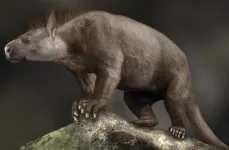
ELSE PRESS RELEASES FROM THIS DATE:
2021-05-13
As we move through the world, what we see is seamlessly integrated with our memory of the broader spatial environment. How does the brain accomplish this feat? A new study from Dartmouth College reveals that three regions of the brain in the posterior cerebral cortex, which the researchers call "place-memory areas," form a link between the brain's perceptual and memory systems. The findings are published in Nature Communications.
"As we navigate our surroundings, information enters the visual cortex and somehow ends up as knowledge of where we are - the question is where this transformation into spatial ...
2021-05-13
A research group has developed an ion-selective smart porous membrane that can respond to outer stimuli, potentially paving the way for new applications in molecular separation and sensing applications.
Porous thin films have attracted the attention of scientists because of their potential use in sensors, energy harvesting, and ion/molecular separation.
Nanostructure properties, such as pore size, thickness, and film density, affect molecular selectivity and molecular permeability. Surface properties also have a significant impact on molecular selectivity.
Thus it is important to be able to control both the 3D nanostructures and surface properties of ultrathin porous films.
Previous research shed light on smart porous membranes, which are covered with molecules that can respond ...
2021-05-13
Eating a diet rich in fruit and vegetables is associated with less stress, according to new research from Edith Cowan University (ECU).
The study examined the link between fruit and vegetable intake and stress levels of more than 8,600 Australians aged between 25 and 91 participating in the Australian Diabetes, Obesity and Lifestyle (AusDiab) Study from Baker Heart and Diabetes Institute.
The findings revealed people who ate at least 470 grams of fruit and vegetables daily had 10 per cent lower stress levels than those who consumed less than 230 grams. The World Health Organization (WHO) recommends ...
2021-05-13
Arizona! The sunsets. The saguaros. The snakes.
All of them are part of life in the sunny Southwest, but keeping cool when the latter is holed up in a golf bag, air compressor or swimming pool pump house is a big ask for a lot of people.
Not as big as you'd think, however.
The first study to analyze snake removals in a social-ecological context was recently published by an Arizona State University conservation biologist working with a local rattlesnake removal company.
"I think one of the surprises was that people don't hate snakes," said researcher Heather Bateman of the College of Integrative Sciences and Arts. "A lot of them responded that the snakes are important to the desert ecosystem and the snake belongs ...
2021-05-13
Optical imaging systems have been playing an essential role in scientific discovery and societal progress for several centuries. For more than 150 years scientists and engineers have used aberration theory to describe and quantify the deviation of light rays from ideal focusing in an imaging system. Until recently most of these imaging systems included spherical and aspherical refractive lenses or reflective mirrors or a combination of both. With the introduction of new ultra-precision manufacturing methods, it has become possible to fabricate lenses and mirrors that lack the common translational or ...
2021-05-13
The relevance for radiology applications is probably the most known advantage of X-ray beams (keV energies) with respect to visible radiation (eV energies) and can be traced back to their superior penetration depth. On a more fundamental ground, however, the relevance of this photon energy range relies on the capability of probing inner shell electrons (as they have comparable binding energies) and mapping molecular structures on the atomic-scale (as typical interatomic spacings are comparable to X-ray wavelengths). Building on such capabilities, large efforts have been devoted by the scientific community to develop X-ray sub-picosecond sources able to access matter properties with a time resolution sufficient to access elemental molecular motions. Free electron lasers (FEL), nowadays available ...
2021-05-13
UNSW medical researchers have found a way to starve pancreatic cancer cells and 'disable' the cells that block treatment from working effectively. Their findings in mice and human lab models - which have been 10 years in the making and are about to be put to the test in a human clinical trial - are published today in Cancer Research, a journal of the American Association for Cancer Research.
"Pancreatic cancer has seen minimal improvement in survival for the last four decades - and without immediate action, it is predicted to be the world's second biggest ...
2021-05-13
The Indian public blamed foreigners, minority groups and doctors for the rapid spread of COVID-19 across the country during the first wave, due to misinformation, rumour and long-held discriminatory beliefs, according to an international study led by Monash University.
This resulted in people refusing to get tested for fear of humiliation or public reprisals, which included attacks on Muslims and health care workers.
However, when presented with accurate and reliable information about the virus spread, the Indian public back-pedalled on those negative sentiments and were more likely to get tested and seek medical help, highlighting the importance of health advice from credible sources.
A ...
2021-05-13
World-first nanotechnology developed by the University of South Australia could change the lives of thousands of people living with cystic fibrosis (CF) as groundbreaking research shows it can improve the effectiveness of the CF antibiotic Tobramycin, increasing its efficacy by up to 100,000-fold.
The new technology uses a biomimetic nanostructured material to augment Tobramycin - the antibiotic prescribed to treat chronic Pseudomonas aeruginosa lung infections in severe cases of CF - eradicating the infection in as little as two doses.
In Australia, cystic fibrosis (CF) affects one in 2500 babies - or one baby born every four days - causing severe impairments to a person's ...
2021-05-13
Cancer death rates have fallen dramatically in the United States, but factor in obesity, as researchers did at the University of North Carolina Gillings School of Global Public Health, and the picture changes.
In a study published May 10 in JAMA Network Open, researchers showed that obesity-related cancer deaths are improving, but at a slowing pace.
Based on mortality data for 50 million people, deaths from cancers not associated with obesity -- that's lung cancer and skin cancer, among others - are declining at a rate almost three times faster than cancers linked to obesity, such as stomach, colorectal, uterine, thyroid and postmenopausal breast cancer.
"These are cancers where we could see even larger mortality improvements with creative and practical tools to combat ...
LAST 30 PRESS RELEASES:
[Press-News.org] Ankle and foot bone evolution gave prehistoric mammals a leg up

